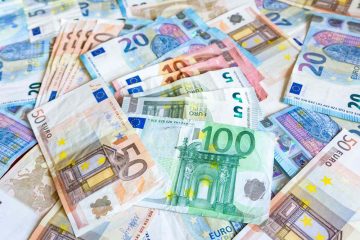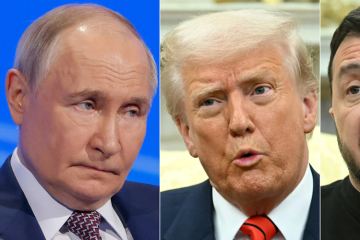| Symbol | Last | Change | % | High | Low |
|---|---|---|---|---|---|
| EUR / PLN | 4.2188 | -0.0042 | -0.10% | 0.0000 | 0.0000 |
| Close | GMT Time : Sat Dec 13 2025 04:03 | ||||
EUR/PLN : Intraday Live Chart
EUR/PLN : Technical Signal Buy & Sell
| 5 Min Signal | 1 Hour Signal | 1 Day Signal |
|---|---|---|
| Sell | Sell | Sell |
EUR/PLN : Moving Averages
| Period | MA 20 | MA 50 | MA 100 |
|---|---|---|---|
| 5 Minutes | 4.22 | 4.22 | 4.22 |
| 1 Hour | 4.22 | 4.22 | 4.23 |
| 1 Day | 4.23 | 4.23 | 4.24 |
| 1 Week | 4.24 | 4.25 | 4.29 |
EUR/PLN : Technical Resistance Level
| Resistance 1 - R1 | Resistance 2 - R2 | Resistance 3 - r3 |
|---|---|---|
| 0.0000 | 0.0000 | 0.0000 |
EUR/PLN : Technical Support Level
| Support 1 - S1 | Support 2 - S2 | Support 3 - S3 |
|---|---|---|
| 0.0000 | 0.0000 | 0.0000 |
EUR/PLN : Periodical High, Low & Average
| Period | High Change from Last | Low Change from Last | Average Change from Last |
|---|---|---|---|
| 1 Week | 4.2376 -0.0188 | 0.0000 +4.2188 | 4.2248 -0.0060 |
| 1 Month | 4.2392 -0.0204 | 0.0000 +4.2188 | 4.2280 -0.0092 |
| 3 Month | 4.2730 -0.0542 | 0.0000 +4.2188 | 4.2417 -0.0229 |
| 6 Month | 4.2802 -0.0614 | 0.0000 +4.2188 | 4.2244 -0.0056 |
| 1 Year | 4.2958 -0.0770 | 0.0000 +4.2188 | 4.2152 +0.0036 |
EUR/PLN : Historical Chart
EUR to PLN Exchange Rate History: Poland’s Zloty and Its European Balancing Act
The EUR to PLN exchange rate captures Poland’s economic transformation, EU integration, and its ongoing monetary independence from the eurozone. Although Poland is an EU member, it has retained the Polish zloty (PLN), allowing it to maintain independent monetary policy under the National Bank of Poland (NBP). Over the years, EUR/PLN has reflected not just Poland’s domestic fiscal stance but also broader eurozone trends and global risk sentiment.
1999–2004: Pre-EU Accession Volatility
As Poland geared up for EU accession, the zloty experienced volatility. Between 1999 and 2001, EUR/PLN moved from 4.00 to over 4.70, reflecting investor caution and early transition pains in the post-communist economy.
However, optimism ahead of EU entry in 2004 helped stabilize the zloty. By mid-2004, EUR/PLN had declined to around 4.00, showing a strengthening zloty backed by reform momentum and foreign capital inflows.
2005–2008: Economic Boom and Zloty Strength
Poland experienced robust growth, rising wages, and strong FDI inflows during this period. The central bank’s inflation targeting and relative political stability helped anchor the zloty.
Between 2005 and mid-2008, EUR/PLN dropped from 4.00 to a low of 3.20, marking one of the strongest zloty phases in modern history. Poland’s EU-driven economic expansion, along with strong domestic demand, made PLN attractive to investors.
2009–2012: Global Crisis and Eurozone Debt Turmoil
The 2008 global financial crisis reversed much of the zloty’s gains. As risk-off sentiment surged, EUR/PLN jumped from 3.20 to over 4.90 in early 2009. Poland remained the only EU country to avoid recession in 2009, but market volatility affected the zloty nonetheless.
Subsequently, the eurozone debt crisis (2010–2012) added pressure. EUR/PLN fluctuated in a wide range between 3.85 and 4.55, with investors favoring safer currencies amid EU instability.
2013–2019: Stability, Low Inflation, and Range-Bound PLN
This period was marked by macroeconomic stability, low inflation, and prudent fiscal policy. Poland maintained solid growth while NBP kept interest rates low.
From 2013 to 2019, EUR/PLN was range-bound between 4.15 and 4.40, with the pair reacting mostly to external shocks rather than domestic issues. EU funding, export competitiveness, and low debt levels helped support the zloty.
2020–2024: Pandemic, Inflation, and Monetary Shifts
The COVID-19 pandemic brought initial zloty weakness, with EUR/PLN spiking to 4.60 in March 2020. However, NBP rate cuts and fiscal support helped contain volatility.
In 2021–2022, global inflation surged, prompting NBP to start aggressive rate hikes ahead of the ECB. However, political tensions with the EU, high energy costs, and war in neighboring Ukraine weighed on PLN sentiment.
By early 2023, EUR/PLN touched 4.80, but stabilization returned with inflation peaking and external balances improving. As of April 2025, EUR/PLN trades around 4.66, reflecting cautious optimism amid persistent geopolitical uncertainty and rate differentials.
✅ Key:
🟢 = PLN appreciated vs euro
❌ = PLN depreciated vs euro
⚠️ = Mixed or range-bound trend
📊 EUR to PLN Exchange Rate by Decade
| Decade | Avg. EUR/PLN Rate (Approx) | Change vs. Previous Decade | Key Events |
|---|---|---|---|
| 1999–2004 | 4.70 → 4.00 | 🟢 -15% PLN appreciation | EU accession prep, reforms, capital inflows |
| 2005–2008 | 4.00 → 3.20 | 🟢 -20% PLN appreciation | Growth surge, FDI inflows, strong fundamentals |
| 2009–2012 | 3.20 → 4.55 | ❌ +42% PLN depreciation | Global crisis, eurozone debt fears |
| 2013–2019 | 4.55 → 4.40 | ⚠️ -3% marginal appreciation | Stability, range-bound PLN, moderate growth |
| 2020–2024 | 4.40 → 4.66 | ❌ +6% PLN depreciation | COVID-19, inflation, Russia-Ukraine war, monetary divergence |
The EUR to PLN exchange rate remains sensitive to Poland’s political stance toward the EU, NBP rate decisions, and global investor appetite for emerging Europe. While structural strengths support the zloty in the long run, external shocks and geopolitical tensions continue to drive short-term volatility.
EUR/PLN - Euro / Polish Zloty Currency Rate
Live Price of EUR/PLN. EUR/PLN Live Chart, Intraday & Historical Live Chart, Buy Sell Signal, EUR/PLN News, EUR/PLN Averages, Returns & Historical Data
» EUR/PLN
» EUR/PLN Real Time Quotes
» EUR/PLN Live Chart
» EUR/PLN Intraday Chart
» EUR/PLN Historical Chart
» EUR/PLN Buy Sell Signal
» EUR/PLN News
» EUR/PLN Videos
» EUR/PLN Averages
» EUR/PLN Currency Pair
» EUR/PLN Historical Data










